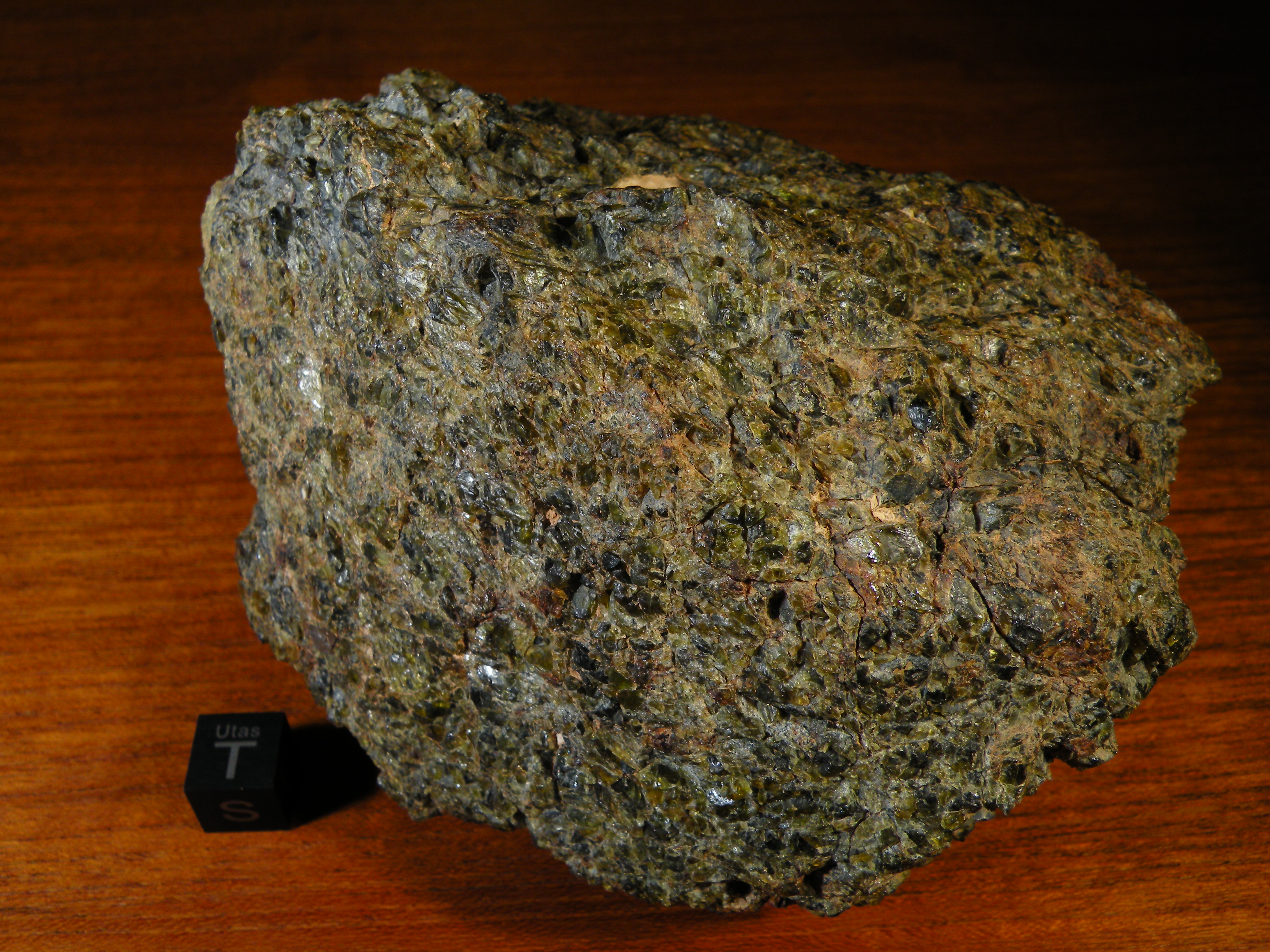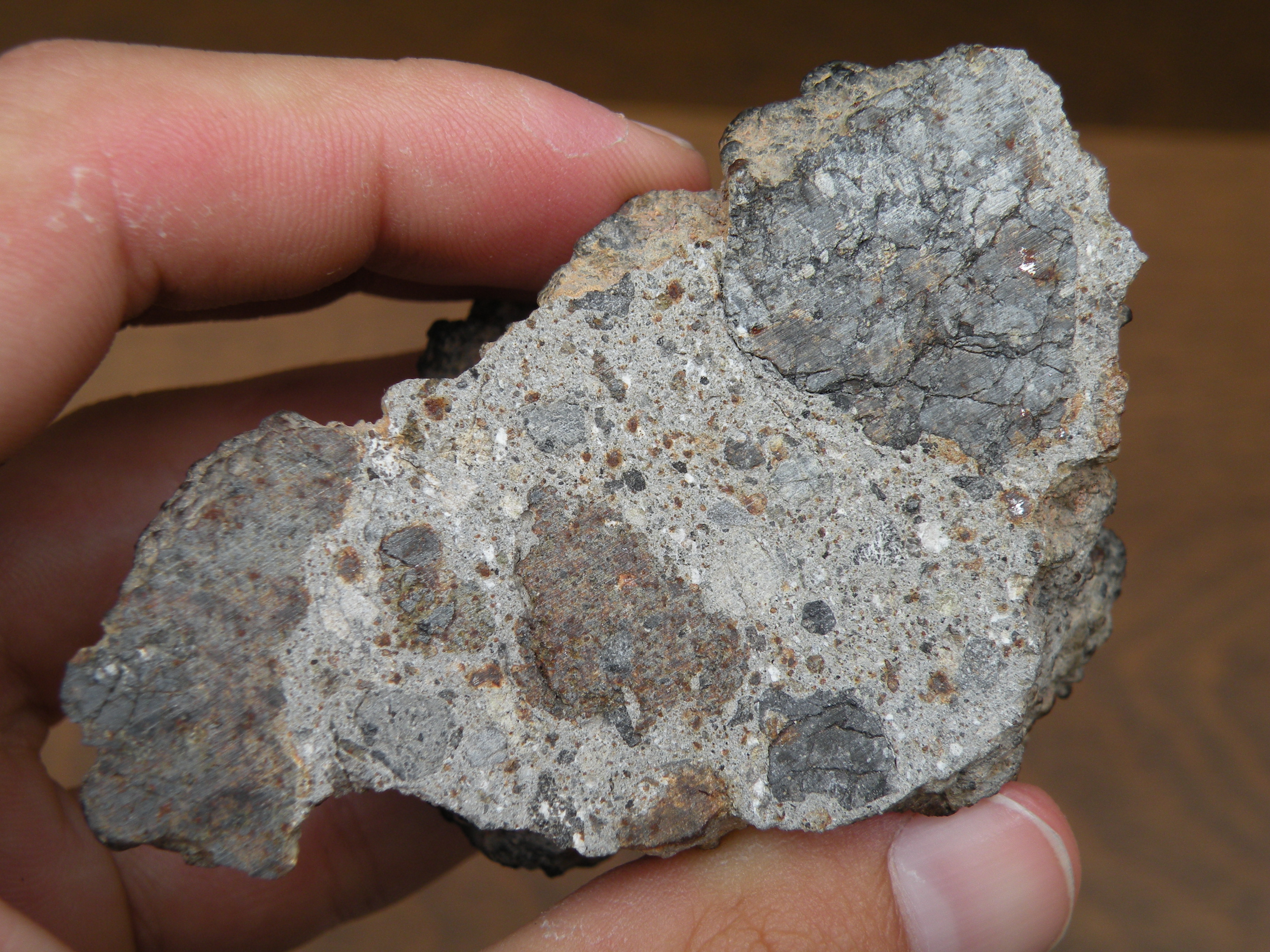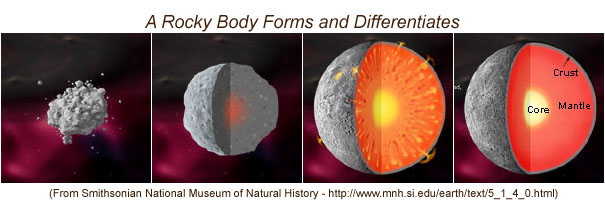Are HED meteorites from 4 Vesta?
“HED” meteorites include ~three different types of igneous rocks with chemical and isotopic similarities suggesting that they all formed on the same parent asteroid.
Those three types are:
1) Eucrites: basalts and cumulate igneous rocks that crystallized at shallow depths in the crust of a small planetesimal. Eucrites are analogous to some crustal rocks on Earth.
2) Diogenites: iron and magnesium-rich (“mafic”) cumulate rocks made of varying proportions of pyroxene, olivine, and feldspar. These meteorites are analogous to deep crustal and mantle rocks on Earth and would have formed between the crust and core of the HED parent body.
3) Howardites: regolith breccias that are a mixture of eucrite and diogenite material, from the impact-churned surface of the HED parent asteroid.
Together, these three classes make up the HowarditeEucriteDiogenite, or “HED” meteorites. What do we know about the minor planet or asteroid these rocks came from? Well…
We know the HED parent body is fairly old: its crust and mantle rocks have crystallization ages dating to at least 4.47-4.48 billion years ago, based on many studies. Some isotopic systems suggest that the HED parent body had fully differentiated within just 2-3 million years of CAI formation (Schiller et al., 2011).
It’s amazing to think that these rocks are that old, but that age isn’t particularly notable among meteorites: formation and crystallization ages for most igneous achondrite and iron meteorite groups date to within ~10 million years of CAI formation. Most bodies that accreted early either melted and then cooled pretty rapidly, or were disrupted by impacts soon after they formed.
There is also evidence for some chemical and isotopic variation within the HED parent body, but we don’t yet fully understand it (for example, see Utas & Warren, 2017). The problem is that the meteorites classified as HEDs exhibit a range of compositions and isotopic signatures, and they seem to gradate into igneous meteorites similar to HEDs, but with differences that suggest they probably formed on different parent asteroids. A few examples of these odd basaltic meteorites are Ibitira, Pasamonte, Bunburra Rockhole. Some were historically classified as eucrites, and they are similar to eucrites in many respects (Greenwood et al., 2016). However, they are different enough that they don’t seem to be from the HED parent body and should probably be reclassified as ungrouped achondrites (e.g. see Sanborn & Yin, 2014).
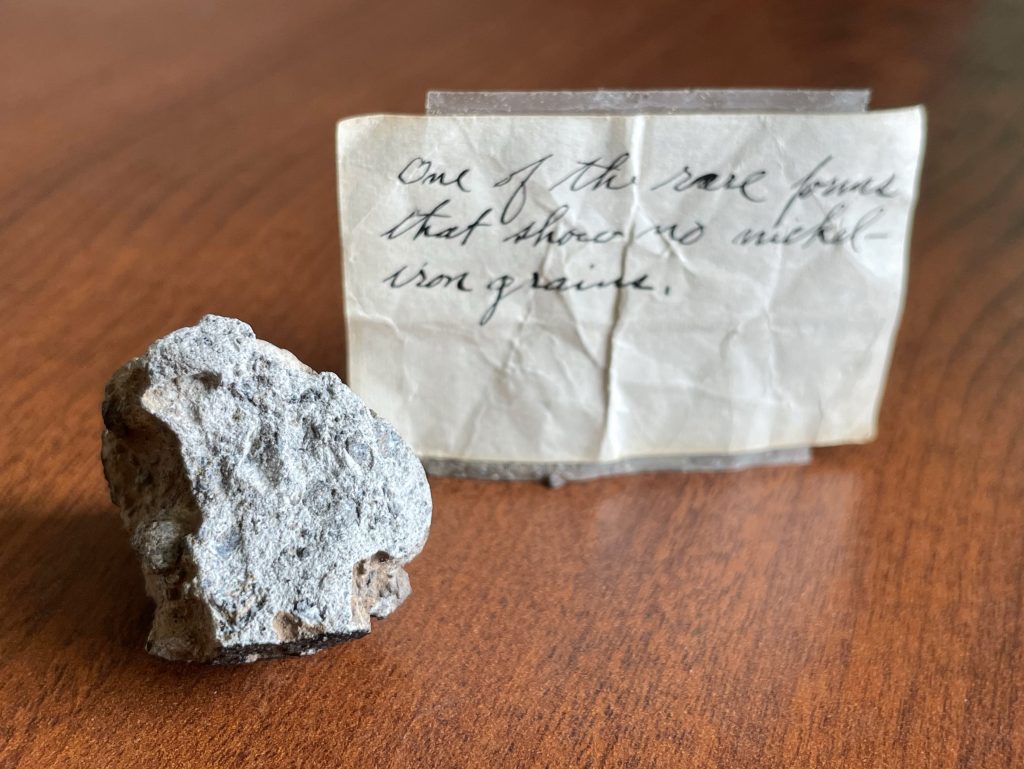
That’s the trouble with this topic. I wanted to start with some broad strokes we know for sure about HED meteorites, and we’re already stumbling into grey areas and unknowns.
…And it gets so much messier than that. There are chemical and isotopic similarities between HED meteorites and other large groups of meteorites like mesosiderites, main group pallasites, and IIIAB irons. There’s a whole body of literature addressing possible relationships between these groups, dating back to at least the 1980s. Some authors try to explain the differences between these groups by claiming that they’re from similar, but different parent bodies. Others argue that they’re all from the same parent planetesimal, and propose phenomena like massive collisions or isotope fractionation effects during differentiation to explain observed differences.

See: Lelarge et al., 2022
And: Rubin &. Mittlefehldt, 1993
As of 2025, I’d say the general consensus is that mesosiderites and HEDs are not from the same parent body, but there’s a small population of researchers who still support that theory. And it doesn’t look like any of the above groups (mesosiderites, pallasites, or IIIAB irons) could be from 4 Vesta, because that asteroid appears to be a relatively intact, differentiated planetesimal.
Understanding these meteorites’ relationships would tell us a lot about the HED parent body. For example, if we knew that HED achondrites and IIIAB iron meteorites were from the same parent body, we could be pretty sure that the HED parent body is not 4 Vesta. Why? Thanks to their abundance on Earth, we know that fragments of the IIIAB planetesimal’s nickel-iron core are dispersed throughout the asteroid belt: the IIIAB parent body was ~completely destroyed billions of years ago and scattered into interplanetary space. But, 4 Vesta has never been disrupted. Its core has never been exposed and is safely sitting under a hundred or so kilometers of solid rock right now, and has been for the past ~4.5 billion years.
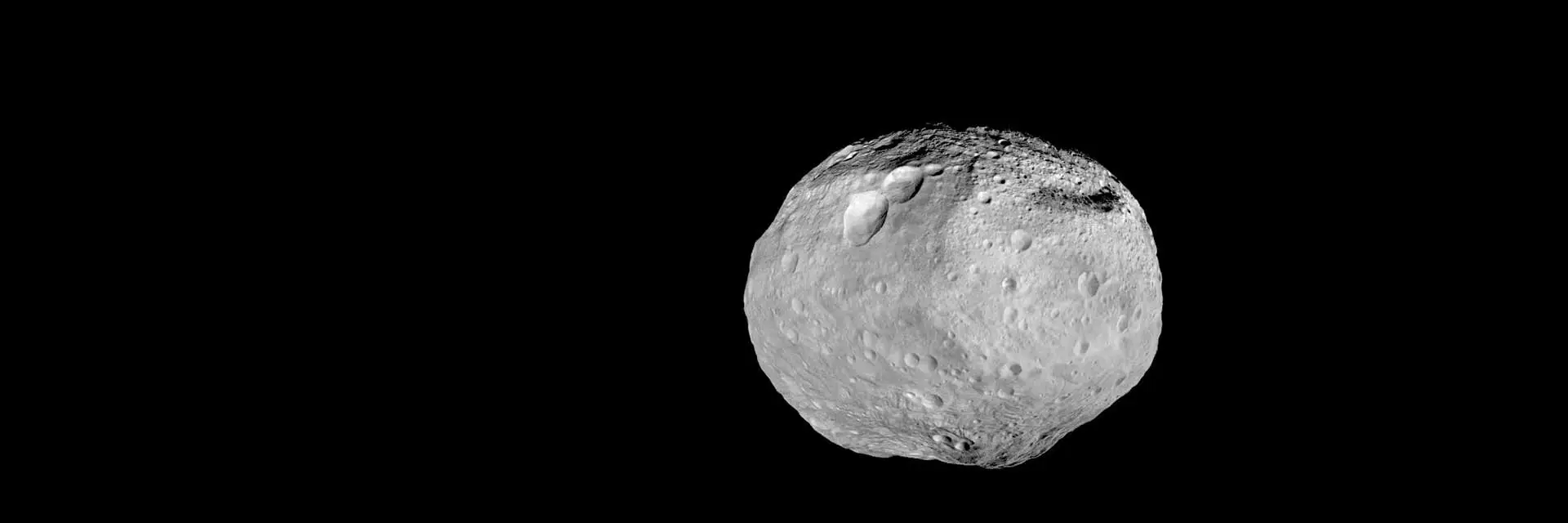
So, what about HEDs and 4 Vesta? What’s the solid evidence tying them together? Well, we don’t have any samples returned from 4 Vesta, but the DAWN mission did collect a lot of information about the asteroid’s surface while orbiting it.
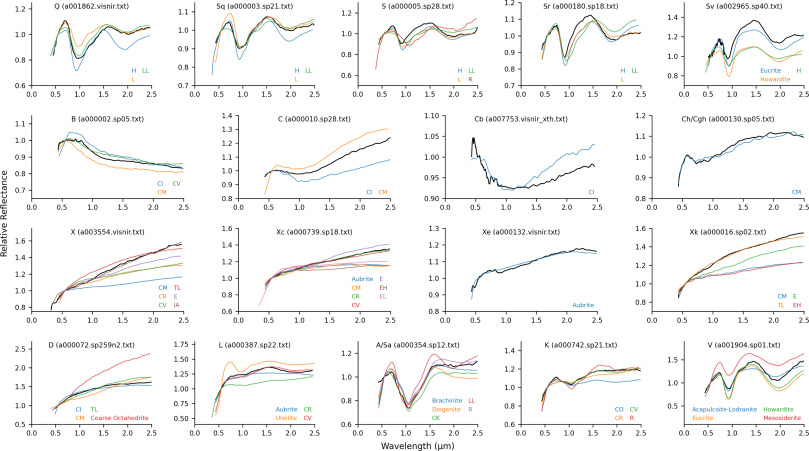
Long story short, an asteroid’s reflectance spectra (the wavelengths of light reflecting off its surface) act as a crude spectrometer and can tell us about the composition of the rocks on the body’s surface. From that, we can say for certain that Vesta’s surface is basaltic, just like eucrites.
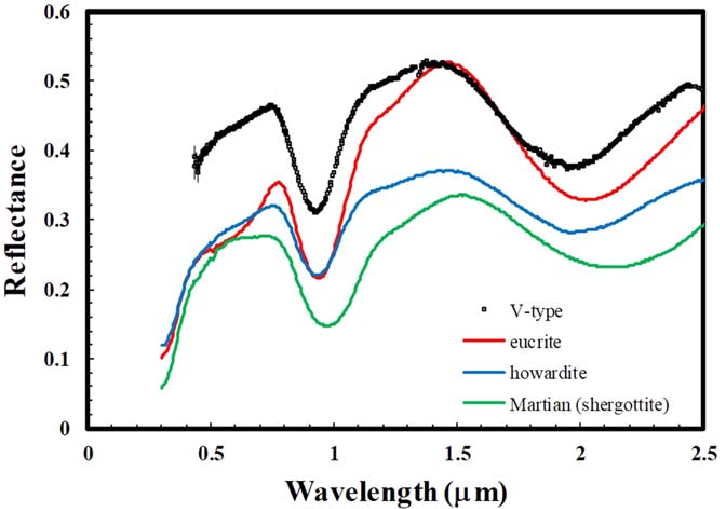
Eucrites are the most common basaltic meteorites, and 4 Vesta is the biggest asteroid with a basaltic surface. Those two facts were apparently enough for many collectors and scientists to start saying that HED meteorites are from 4 Vesta.
How solid is that claim?
Well, as I mentioned above, there are a number of basaltic meteorites in collections on Earth that are very similar to eucrites, but which are probably not from the HED parent body. For example, here’s a figure (from Beck et al., 2011) that includes spectra from some basaltic meteorites that probably aren’t from the HED parent body, like Pasamonte and Dhofar 007: the latter is probably a basalt from the mesosiderite parent body. Needless to say, you wouldn’t be able to pick those two rocks out of the HED lineup in that paper.
In other words: sV or V-type asteroid spectra aren’t unique to HEDs and don’t prove a link between the two. ~Any differentiated body with a basaltic crust should have a similar reflectance spectra.
Maybe 4 Vesta is the source asteroid for Pasamonte, and not typical HEDs. The evidence for that rock being from 4 Vesta is just as good as the evidence for HED eucrites. Or maybe a different group of basalts, like Bunburra Rockhole, are from 4 Vesta. I haven’t seen any reflectance spectra for that meteorite in particular, but its published analysis shows it would be an equally good spectral match. It’s also very possible that we haven’t found any fragments of 4 Vesta on Earth yet.
Based on the number of chemically distinct iron meteorites, we think that may have been upwards of a few hundred planetesimals large enough to melt and differentiate in the early Solar System. Every single one of them would have formed an iron core, mafic mantle, and basaltic surface…
Then there’s the iron problem. We see very little evidence for mafic rocks analogous to diogenites on 4 Vesta’s surface. It’s difficult to reconcile that with the number of diogenites and howardites found on Earth. If samples of 4 Vesta’s mantle are regularly falling to Earth (and they are), those rocks should be exposed on the surface of the HED parent body. But we don’t see ~any rocks like them on the surface of 4 Vesta, and mantle material appears to be nearly absent among the Vestoid “family” of asteroids. This information suggests that HEDs in particular might not be from 4 Vesta.
Beyond that, there are many studies that have raised various issues with the theory that HED meteorites are from 4 Vesta. For example, some evidence suggests that the HED parent body may have been much smaller than 4 Vesta.
To sum it up: the surface of Vesta is basaltic, like eucrites, but both HED meteorites and 4 Vesta exhibit characteristics which suggest that the two may not be related. We also have examples in our collections of similar basaltic meteorites that we’re pretty sure are not from the HED parent body, and which would be equally good spectral matches with the asteroid. Given the chemical and isotopic similarities between HED achondrites and other groups like IIIAB irons, main group pallasites, and mesosiderites, and the fact that we don’t yet know for certain if some or all of those groups are from the same parent body, assuming that one (or more) of them is from to 4 Vesta is…a very big assumption, at this point.
If you hear someone claiming that HEDs are from 4 Vesta, take what they’re saying with a big grain of salt. I would be wary of anyone who says that as though it’s a proven fact.
HED meteorites could be from 4 Vesta: we just don’t know yet.

